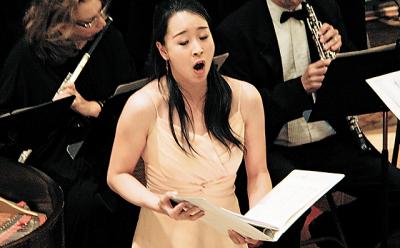Christmas Music Beyond Traditional

For those who love music, the Christmas season can present a conflicted situation. Often, a favorite carol or album is essential to enjoying the season and to connecting current celebrations to those of years past. Many music lovers seek out and delight in annual performances by dependable ensembles of particular works, such as “The Nutcracker” or Handel’s “Messiah,” or pull out a collection of CDs that only sees the light of day during the portion of the year with the least daylight. But alongside this intentional and often pleasurable music of the season, it is a reality of modern life that nearly any sort of commercial activity can result in unsolicited music broadcast over a public address system, often featuring tired retreads.
Any combination of the above might lead a music lover to think of Christmas music as a closed set of works, just a yearly revival of traditions or an unwelcome annual rehashing of bland holiday songs during each shopping trip in November and December.
On Dec. 6, fortunately, the Choral Society of the Hamptons offered a different approach in its concert “A Rose In Winter.” Mark Mangini, the society’s music director, conducted an adventurous program featuring Christmas music from the 15th through the 20th centuries, embracing many styles and traditions and offering music lovers the opportunity to expand on their ideas of favorite holiday music.
The first four pieces, “Four Carols for the Annunciation,” consisted of three anonymous 15th-century English carols followed by one Basque carol arranged by Edgar Pettman (1866-1943). A semi-chorus of singers stood in front of the main chorus, allowing the carols to alternate among many textural variations. The main function of the full chorus was to sing the opening salutation and several refrains based on it, using a vigorous unison sound. The “harmonized” portions of the carols featured various groupings from within the semi-chorus, including three-part women’s voices; a duet between the altos and tenors, with basses joining on the repeat; a duet between tenors and basses, and a soprano-alto duet. The final carol, Pettman’s arrangement of “Gabriel’s Message,” gave the audience its first opportunity to hear the full choral society singing in four parts, revealing a firm choral tone and an excellent blend of voices.
“Es ist ein’ Ros’ entsprungen” by Michael Praetorius (1571-1621) is better known to English-speakers as “Lo, how a rose e’er blooming.” It may have been the most familiar tune to most listeners, and inspired the name of the program. The full chorus, accompanied delicately on a portative organ by Thomas Bohlert, presented two verses of the carol using its original language, briefly but beautifully separated by a presentation of Melchior Vulpius’s four-part canon based on the same melody. The chorus then presented another Praetorius work, “Psallite,” allowing the audience to hear how the composer of such a familiar carol handles contrapuntal music at a faster tempo.
The next two pieces, “Jesu, rex admiribilis” by Giovanni Pierluigi da Palestrina (1525-1594) and “Christe, redemptor omnium” by Claudio Monteverdi (1567-1643), were performed by the sopranos and altos of the full chorus. The music has very little accompaniment and calls for a number of highly vulnerable entrances from the singers. While most of these came across well, there was one entrance each from the altos and the sopranos where pitch was not immediately secure. Even so, the choral society should be commendedfor taking on these tricky pieces and delivering a nearly flawless performance of them.
“Hodie Christus natus est” by Giavonni Gabrieli (1570-1615) was an exciting finish to the first half of the program. A portion of the chorus and a consort of double-reed woodwinds moved to the rear of the Bridgehampton Presbyterian Church, with the main part of the chorus and Mr. Bohlert on the portative organ remaining at the front. The interplay between the two choruses, separated by space as they would have been in Gabrieli’s home cathedral of St. Mark, electrified the audience.
A special challenge in music from the early Baroque arises from the frequent changes of meter, and these changes can prove difficult to bring about with musicians spread farther apart than usual. Kudos to Mr. Mangini for his clarity as a conductor, and to the singers and players for achieving the cori spezzat effect.
The second half of the program featured “Lauda per la natività del signore” by Ottorino Respighi (1879-1936). The orchestration of this piece explained the composition of the South Fork Chamber Ensemble for this concert, as Respighi called for double-reed woodwinds and flutes, with a touch of piano (four hands). Mr. Bohlert shared the piano with Christine Cadarette, the chorus’s accompanist, for the final movement, having moved from the portative organ, where he had provided some gentle guidance for the singers in passages meant to be sung a cappella. It is worth noting that Mr. Bohlert played flawlessly on three separate instruments over the course of the concert, while Ms. Cadarette immediately picked up her folder and sang with the chorus at any moment where the piano was still.
Respighi’s piece calls for an expressive mezzo-soprano to play Mary, and Cherry Duke certainly filled that need. Nils Neubert, tenor, sang beautifully as the Shepherd. However, it was Mizuho Takeshita who shone the brightest in her role as the Angel. Her voice soared and plunged magnificently, as required for the role, always with excellent diction and timing.
The choral society deserves credit for presenting a program that offered listeners a chance to explore Christmas music from outside the usual channels of tradition.
